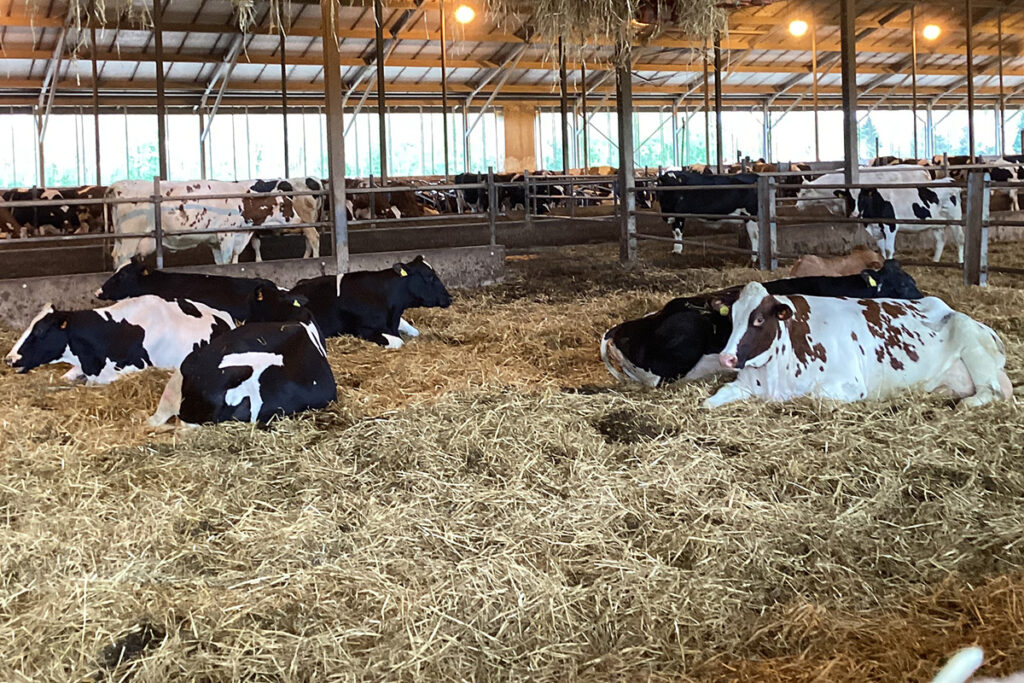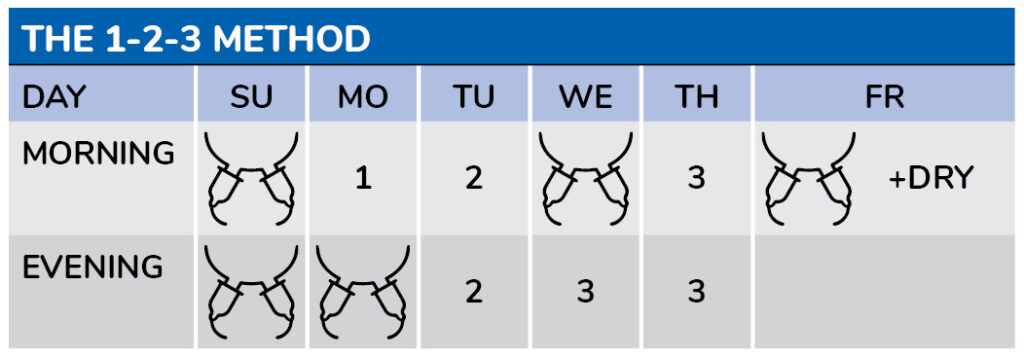1-2-3 method contributes to good udder health
When the routine of daily milking is stopped, the risk of developing mastitis increases and cows that are entering the dry period can easily become infected. This means that dry off and the dry period must progress smoothly. At the K.I Samen breeding station and dairy farm cows are dried off methodically according to a defined, well thought out protocol to prevent udder infections occurring before calving. Any existing infections are treated and cured.

Dry off protocol at K.I. Samen breeding station and dairy farm
Optimising dry off
“It’s advisable to draw up a protocol that describes the dry off process”, begins Ralph Engelen. “Doing this forces you to think carefully about the best way to dry off your cows.” K.I. SAMEN breeding station and dairy farm has fine-tuned its dry off protocol over the years. How does Ralph manage to prevent mastitis during the dry period?
“Since we started using the 1-2-3 method, we have not had any cows with mastitis during dry off”
Dry off in practice
Last year, the dairy farm dried off about 10 cows a week using the 1-2-3 method. Ralph continues: “We started using the 1-2-3-method to dry off our cows in 2018. Before then we dried off the cows by milking them once a day and then drying off, but the results were not always satisfactory. In consultation with our vet, we started using the 1-2-3 method. It works perfectly,” laughs Ralph. “Since we started using this method, we have not had any cows with mastitis during dry off.”
How does the 1-2-3 method work?
“I’ll explain”, Ralph says. “On Saturday, cows that need to be dried off are fed a dry off ration. They are milked as usual on Sunday to avoid any double stress. They are not milked on Monday morning, but milked in the evening instead. Then they miss two milking sessions – so they are not milked at all on Tuesday. They are milked again on Wednesday morning, but not milked on Wednesday evening, Thursday morning and evening. There is one more milking session on Friday morning before they are dried off fully. This allows the udder time to gradually enter a resting phase. Our experience shows that the udders dry up very well.”

Would you like more tips on ensuring better udder health? Click through to this knowledge article about the important factors that play a role in maintaining good udder health.






